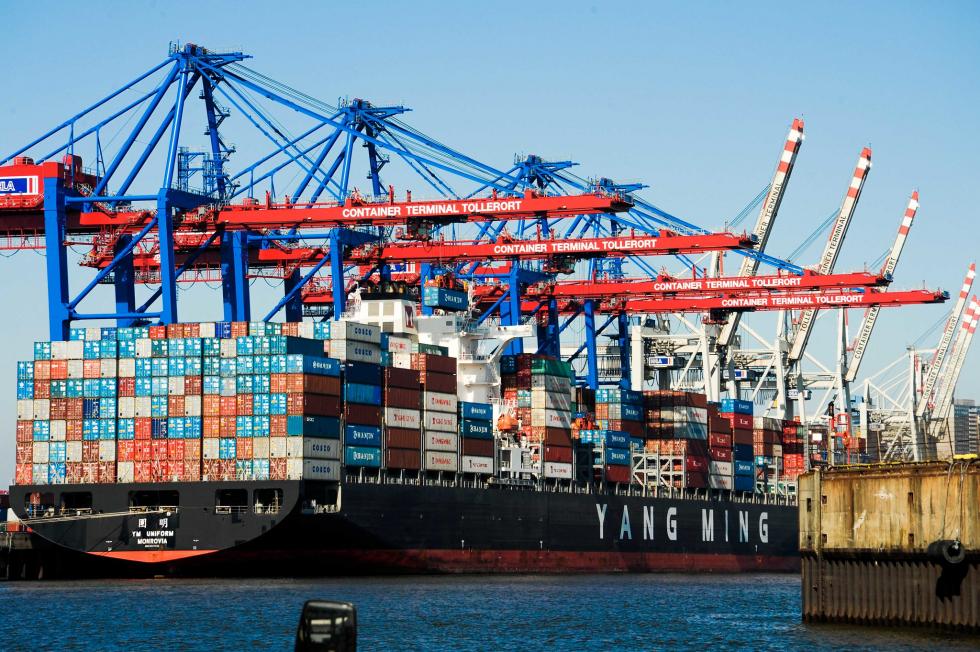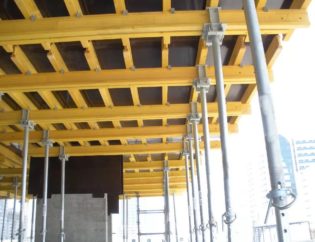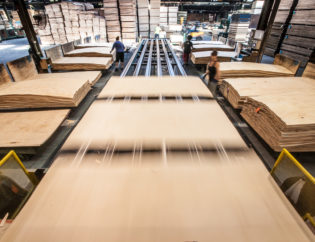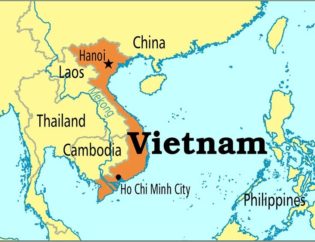
Boell – The World Trade Organisation (WTO) is a crucial institution for the governance of international trade. It has been characterized by frequent deadlocks in the past; current trade war dynamics further exacerbate the need for reforms. What are opportunities and challenges in the present debate?17 January 2020 by Amrita Narlikar
Share with friends:
The World Trade Organization (WTO), which had already suffered some serious losses in credibility due to the persistent deadlocks of the Doha Development Agenda, has received an even worse battering in recent years. President Trump has described it as “the single worst deal ever made” and has threatened to withdraw from the organization. Its rules have been bypassed as trade wars have escalated. Even its Dispute Settlement Mechanism (DSM) – often regarded as the organization’s pride and joy – has been paralysed. Is there any reason to hope for a successful reform and rescue of this still youthful organization, [1] and the values of a rules-based trade multilateralism that underpin it?
1. Identifying the Problems
First, and the most important point to note, is that many of the problems facing the WTO run deep, and pre-date the arrival of the Trump administration on the scene. [2] Recall for instance, the Doha Development Agenda (DDA), which was launched in 2001 amidst much hope and was scheduled for completion in 2005; in reality, the negotiations have been dogged by deadlock, with the first major breakdown having already occurred in 2003 at the Cancun Ministerial. Recall further that although it is fashionable to blame Trump for the crisis of multilateralism, the turn away from multilateralism and towards regionalism actually began under the Obama administration. Recall even further that although the DSM faces a new low (thanks to the refusal of the Trump administration to appoint/ reappoint members of the Appellate Body), the practice of blocking judges is not new per se. Pressures on the Appellate Body go back to the second George W. Bush administration, while the first actual block occurred under the Obama administration. [3] Trump and his administration have poured petrol on the fire, but that fire was already lit some time ago. So it is wishful thinking to assume that if Trump loses in the election, the problems of the WTO will vanish away.
Second, the problems facing trade multilateralism are several, and affect all three pillars of the WTO: negotiation, dispute settlement, and transparency. The negotiation function of the WTO has been deadlocked for years now; the round now survives in an ignoble mode, neither living nor dead. The DSM – sometimes even regarded as an alternative route to reaching agreements through jurisprudence, when the negotiations themselves were flailing in the early years of the DDA [4] – is also in serious crisis. With the US having blocked all new appointments and reappointments, only one judge remains in the Appellate Body since 10 December. This means that countries could deliberately refer cases to panels, knowing that there is no appeals process via the Appellate Body, and thereby let disputes lie unresolved in limbo. The third function of the WTO – transparency – operates via the Trade Policy Review Mechanism (TPRM). This function is perhaps the least damaged of the three. But it also has its fair share of problems that include non-notification by members, controversies on the reach of the reviews and monitoring reports, and polarisation within the membership on how these issues should be dealt with. This dysfunction in all three pillars of the WTO is serious enough a problem in its own right, but acquires even greater importance in a context of raging trade wars outside. As report after report shows, trade is declining – and while the decline affects different countries and groups within them in different ways, there is no question that the pie of global prosperity is getting smaller.
2. The Reform Debate
The danger that the WTO faces is serious. But we have reason for some optimism, thanks to a rich repertoire of reform proposals that are coming from different sides and address all three functions of the organization. This vibrancy of the reform debate is already a positive development, and stands out in contrast to the soporific dullness that had been induced by the Doha stalemates in the organization and among its membership for many years.
Amidst the reform proposals that are already on the table, curious alignments are emerging. For example, a closer look at the substance of the critique offered by the US as well as its detailed proposals presented in Geneva point to more constructive engagement with the WTO than Trump’s angry tweets suggest. [5] In advancing its reform agenda, the US has insisted on a sharpened differentiation within the group of countries that self-identify as developing countries to prevent misuse of Special and Differential Treatment (SDT); a reform of the Dispute Settlement Mechanism, and especially the “approach” of the Appellate Body including issues of “overreach”; new rules to address the unfair advantage accruing to countries due to the abuse of current rules on subsidies, definitions of state-owned enterprises and so forth; and improvements of the transparency function that would require better incentives to ensure compliance of notification obligations. And although the US has been particularly robust in its critique and insistent with its demands, it is certainly not alone in highlighting these problems. The European Union, Canada, and others have come up with comprehensive proposals, which seek to address many of the issues that the US has also been raising; the US, EU, and Japan have also presented joint papers that illustrate their shared position on several of these subjects. [6] Taken together, these diverse proposals offer ways to strengthen the WTO – not weaken it – and guard against an exploitation of loopholes in the system. Amidst all the problems that the organisation is encountering, the shared concerns and joint/ overlapping proposals offer some fertile ground for an agenda of sustainable reform.
The differences among the members are just as important as the overlaps in some positions. Not all the disagreements can be easily reconciled, at least not in the short-run. But this makes the politics of reform all the more interesting. On the issue of the Appellate Body, although all members seem to agree on the principle of reform, there is a major division between the US and the rest. The US insists that the fundamental issue of the “approach” of the Appellate Body must be addressed first, whereas multiple other players have been hard at work trying to find interim solutions. [7] Although this standoff is probably unlikely to get resolved under the current Trump administration, the situation may look different post US elections in 2020. This is why even stopgap measures, such as the EU-Canada-led initiative for a parallel process under Article 25 of the Dispute Settlement Understanding, may be useful to keep the system running. [8] On SDT, the fault-lines are drawn across a group of developing countries [9] versus the US (backed by the EU, and other developed as well as some developing countries). Here, through a mix of technical solutions (that introduce some nuance and flexibility into the system, while tightening it against abuse) and political effort (particularly through a “de-hyphenation” of China and India [10] – an example where through a crude categorisation of “ChIndia” as one, EU, US and others have helped build an avoidable alliance against themselves), compromise may be possible.
3. Gaps in the current debate
The richness of the discussion notwithstanding, there are two gaps that are serious enough to render even the most convincing proposals ineffective.
The first problem relates to the lack of wider narrative on the value of trade multilateralism (and why people should care about this), that is missing from the reform debate. I cannot emphasise the costs of this missing narrative enough because there are large groups of people who believe that the gains of globalisation have passed them by. These include Mr Trump’s supporters, as well as those on the extreme Right and Left in Europe – and indeed even the moderate Right and Left representing different ideologies around the centre. The job losses that these groups face, the personal adversities that they suffer, indeed the growing inequalities that they see in their societies, are often a result of several factors: weak welfare mechanisms and technological change, for instance. But trade is an easier scapegoat, and one that is readily used also by politicians – and it is easier to blame one’s trade partners for the inadequacies of one’s own economy. Even if the members of the WTO and the Secretariat were to come up with a perfect technocratic solution to some of the problems, they efforts would be to no avail if they fail to explain to affected electorates why and how these solutions will help improve their lives.
Take, for example, the case of the Trade Monitoring reports, which the WTO has been mandated to do since 2009. These are helpful, objective, solid pieces of work. The reports have been showing that since mid-October 2017, early protectionist rhetoric has turned into actual trade restrictions. Even though trade tensions have been limited to major trading partners, forecasts for the global economy are discouraging. But this is still information at a very general level. And the fact that trade is declining might even be wrongly interpreted by people as a positive development – especially those people who believe a counter-narrative that scapegoats trade for the job losses and economic hardships that they personally endure. A persuasive narrative must address the so-what question – e.g. what the figures mean for people. [11] Were the reports to have a clear and accessible narrative running through them, they would not only get picked up more by relevant stakeholders but also create positive feedback loops back into the negotiation and implementation processes. Such stakeholders naturally include business groups, but also other groups from civil society, trade unions, and members of the public at large.
The second problem is even more fundamental, and relates to a changing context of geoeconomics or economic statecraft. [12] There is some attention within the current reform debate on China’s state-owned enterprises, technology transfer requirements etc, but it seems to miss a bigger point: The WTO belongs to the same cluster of institutions – including the EU – that were built in the post-war years on the assumption that increasing trade liberalization and integration would automatically lead to peace. The WTO was not built for a world where we would see a weaponization of economic gains – the use of the benefits accruing from trade liberalization to acquire a strategic advantage in security matters. If trade liberalization could potentially be used by possible systemic rivals to gain a security edge over us, then we need to be having a bigger and serious conversation about a new set of rules. This new set of rules would cordon off not only certain measures (such as certain subsidies) but also certain areas from trade liberalization – particularly those areas where there are direct security implications (such as digital technology). In these areas, the raising of protectionist barriers would be allowed. This could, for example, result in some decoupling from China (limiting trade and/or cooperation). Decoupling, or economic disengagement, would generate some economic costs, no doubt. But these economic costs could be balanced by security gains.
A group of like-minded countries – for instance via the Alliance for Multilateralism (as advanced by the German Foreign Minister, Heiko Maas) – could take a lead in addressing the concern that many countries share. But to do this effectively, the alliance would have to develop more of an ideational spine. It would need to identify the first-order values that members could collectively stand for (e.g. pluralism, liberalism, rule of law), and relate these to trade issues – for instance on the matter of state-owned enterprises. This will not be an easy task, not least because Europe itself is deeply divided on these issues, as shown be the 17+1 initiative (involving cooperation China plus Central and Eastern European countries on the Belt and Road Initiative). But it is a necessary one.
Failure to address this issue head on could have devastating consequences for the WTO: if we fail to identify a limited set of areas where protectionism is allowed and legitimised, we will likely end up with a scenario of a complete securitization of trade – where countries are able to put up trade barriers on just about everything, all under the pretext of security. If this does happen, we would see a much bigger disruption of global value chains – in contrast to limited losses caused by a controlled decoupling that the WTO could help regulate (if it acts in a timely way). Under this breakdown scenario, we would all lose out – and the poorest and the weakest would likely suffer the most.
Acknowledgement: An early version of this article has been presented as an “Impulsvortrag” for two working groups of the FDP in Parliament. I am thankful to the participants for their stimulating questions. I also thank colleagues in Geneva, and especially Braz Baracuhy, for helpful exchanges on this subject.
Vietnam Plywood
Vietnam Film Faced Plywood










